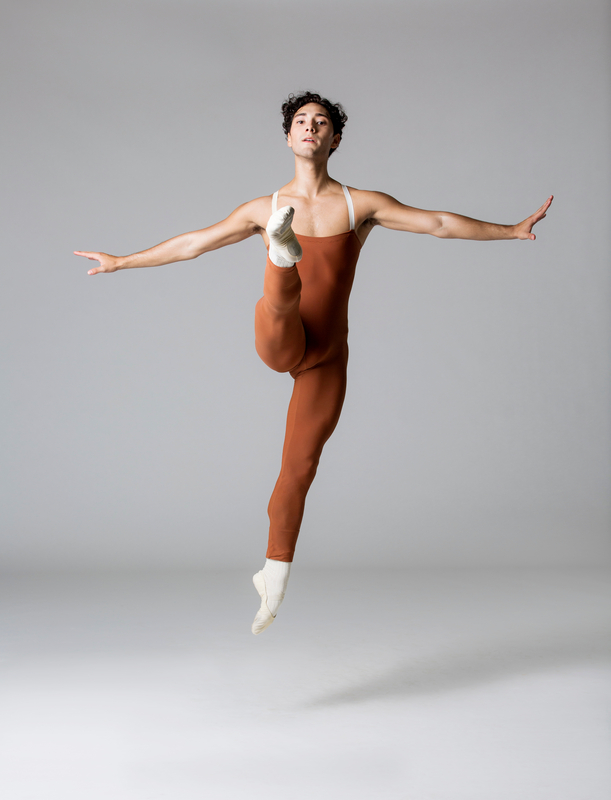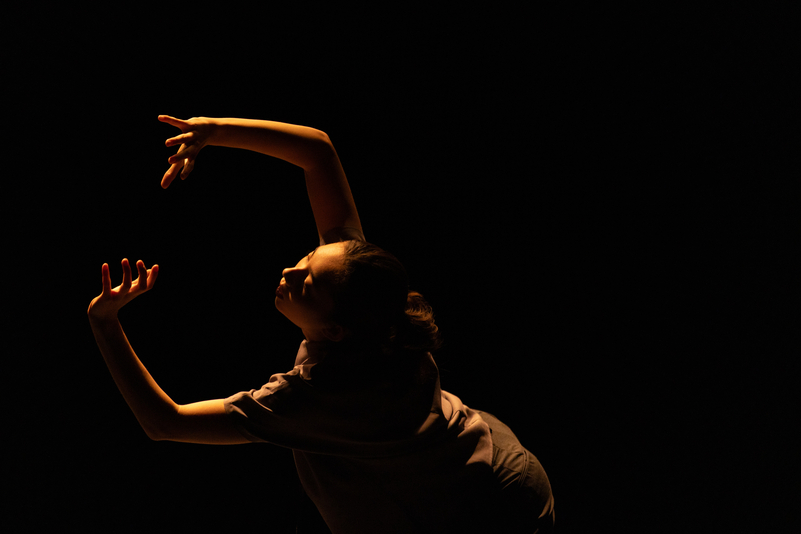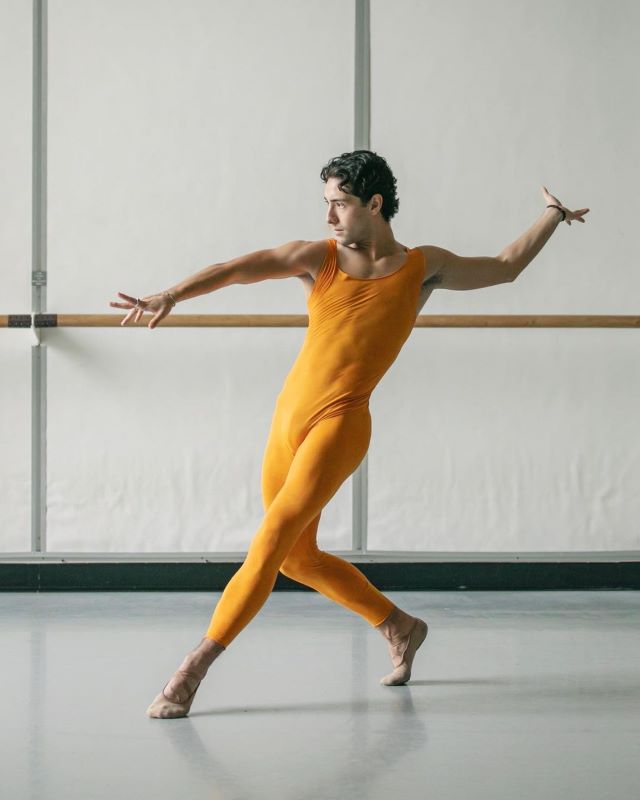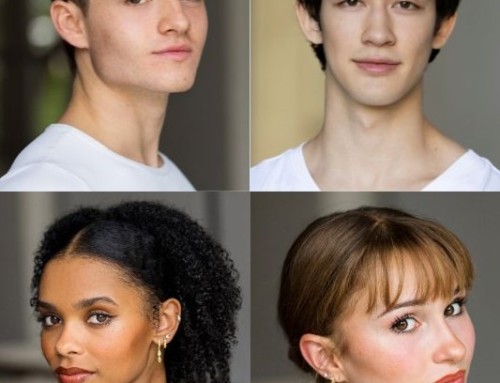Meet the 2024 NEXT STEP Artist: Luca Anaya
In this blog, you’ll learn more about PNB dancer Luca Anaya, who recently choreographed his first piece as part of NEXT STEP! NEXT STEP provides opportunity, infrastructure, and support to grow tomorrow’s choreographic talent while providing a unique performance opportunity for PNB School’s Professional Division dancers. This year, Professional Division students performed original work from company dancers Lily Wills, Noah Martzall, Luca Anaya, Melisa Guilliams, and the co-choreographer teams of Elle Macy/Dylan Wald and Amanda Morgan/Christopher D’Ariano. Learn more about Luca’s experience participating in NEXT STEP below.

What themes/concepts did you explore in your NEXT STEP piece?
The piece is a response to the amount of trauma that all artists go through; the sense of weight and responsibility we all carry, along with the fear of not being good enough. The piece progresses that theme, and we see how much one person can take.
Though the world is changing, and ballet is changing with it, a big part of ballet (and art in general) is linear; either it’s perfect or it’s incorrect. Especially in ballet, you do a position, and it either looks great or it doesn’t. No matter how much things change, that always will remain a constant struggle many people will face, myself included.
That struggle often manifests as an internal conflict within artists. There’s an inner voice talking in our head, saying, “It’s not enough; You can’t be good enough for this.” Throughout my piece, a dancer gets deeper into that mindset and gets a clouded judgment. And then, in the finale, we can see that the dancer has had their limit and is at their breaking point; they just can’t take it anymore.
The name Spectators hones the theme. At the beginning of the piece, the dancers come in through the house. At the end, the house lights come in, and the dancers point at the audience. The fourth wall is broken, and the dancers are expressing, “We see you. You’re not spectators anymore; we see you.” The dancers put pressure on you as an audience member.
Many people felt uncomfortable with that, which was exactly the goal, because it is an awkward situation. I think a lot of people refuse to address the internal struggle artists go through. It’s hard to tell when someone is struggling because they either hide it or just don’t know how to express it. Being kind to people, recognizing that they might be struggling, and asking if they are OK can be enough of a gesture to alleviate their stress.

What was your choreographic process like?
As a first-time choreographer who had barely any limits on what I wanted to create, it was overwhelming. And stressful! But it was also very enlightening. Gaining the vulnerability to open up to my dancers made a world of difference in the creative process. That was a huge point for me, being vulnerable with them and trying things that are considered “weird.” I assured them that I thought weird was good. When dancers go en pointe, go on their tippy toes, that’s not exactly normal. All the positions we hit in ballet are very abstract and very athletic, which is something normal people don’t do. So yeah, ballet is weird. I think creating should be weird; it’s interesting that way.
The dancers and I being vulnerable made the process surprisingly easier and allowed us to experiment. I would create phrases from nothing, just purely on feeling. Then I would tell them, “This phrase means mourning and sadness. This means anger and rage.” We would also play with the idea of different body parts controlling your body; for example, your elbow leads, and everything else follows. Playing with all of those ideas helped create phrases that I used in the piece for corps de ballet sections and solos.
What choreographers inspired you?
Well, what we do here at PNB is a huge inspiration. Also, I’ve been exposed to different types of dance since moving to Seattle like Kidd Pivot, and Whim W’him to name a couple. Really, I take inspiration from the dancers rather than the choreographers themselves. Watching any individual dancer, you can see their personality shine through in even the slightest way, and it tells you so much about them. I was inspired by life stories and life experiences that I’ve gone through, that friends have gone through, and that other artists have gone through. I recognized a story that we all have in our journey as artists. Realizing that and watching the movement of dancers was a huge inspiration and continues to inspire me.

What’s something most people don’t know about you?
A lot of people don’t know that I was a voice actor as a kid. I grew up in a Spanish household. My mom is a professional VO (which is voice acting, for short), and I hopped on that train as well growing up. I did a lot of ads in Spanish as a kid for Charmin and other small things like that – just tiny, little words that were like 15-second ads. I thought it was super cool. It was a neat thing to show my friends and be like, “Oh, I did this.”
How does choreographing inform your performance practice?
It’s been super insightful. Many of this year’s NEXT STEP choreographers agree that it showed them how much you can see from the front of the room. You can see every facial expression, every movement, every little mess-up, or face that somebody makes; it’s so clear. It puts things into perspective for me. It’s also grown my respect for the artistic staff as a whole, especially choreographers or anyone who stages a ballet. It’s a lot of work; there are so many moving pieces and so much to keep track of. Yet, it’s up to the dancers to take the movement into their own hands and help the stager or choreographer to make their job easier for them.





